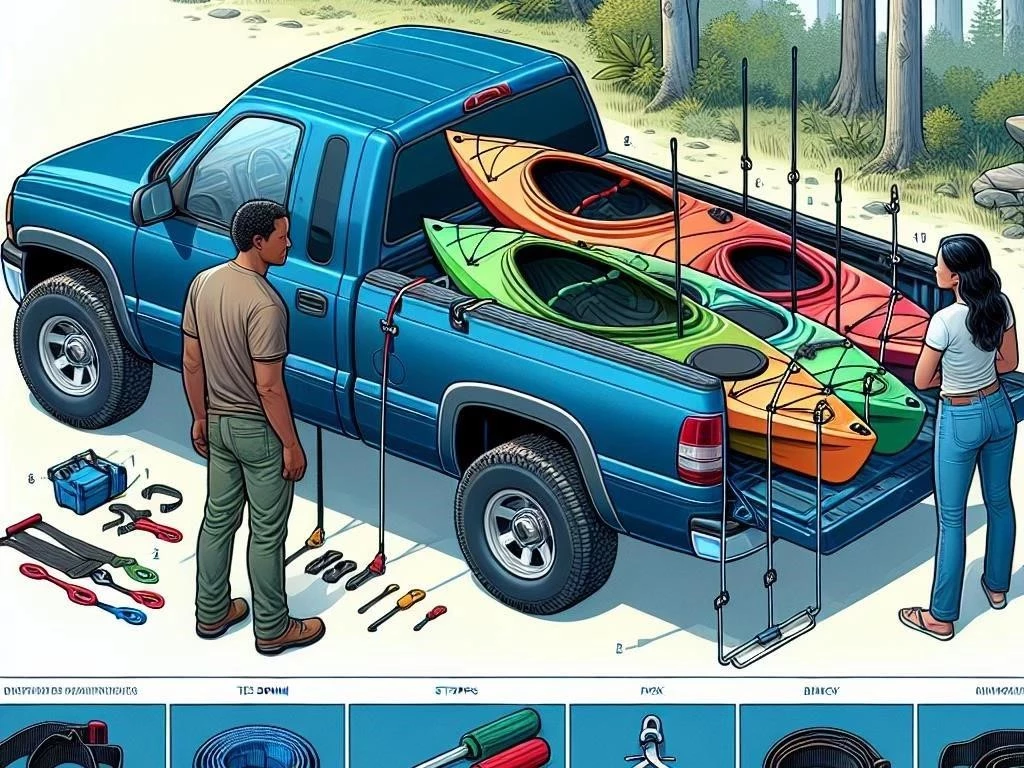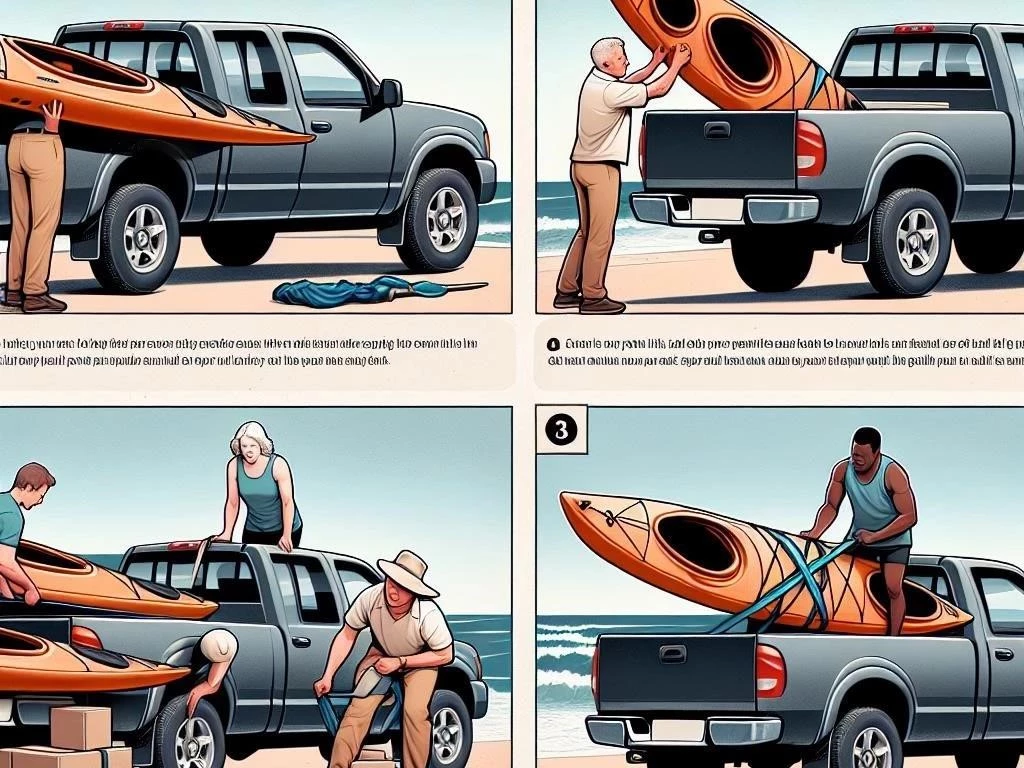
Transporting kayaks in a truck requires careful planning‚ proper equipment‚ and attention to safety for a smooth outdoor adventure. Proper techniques ensure vehicle stability and secure kayaks.
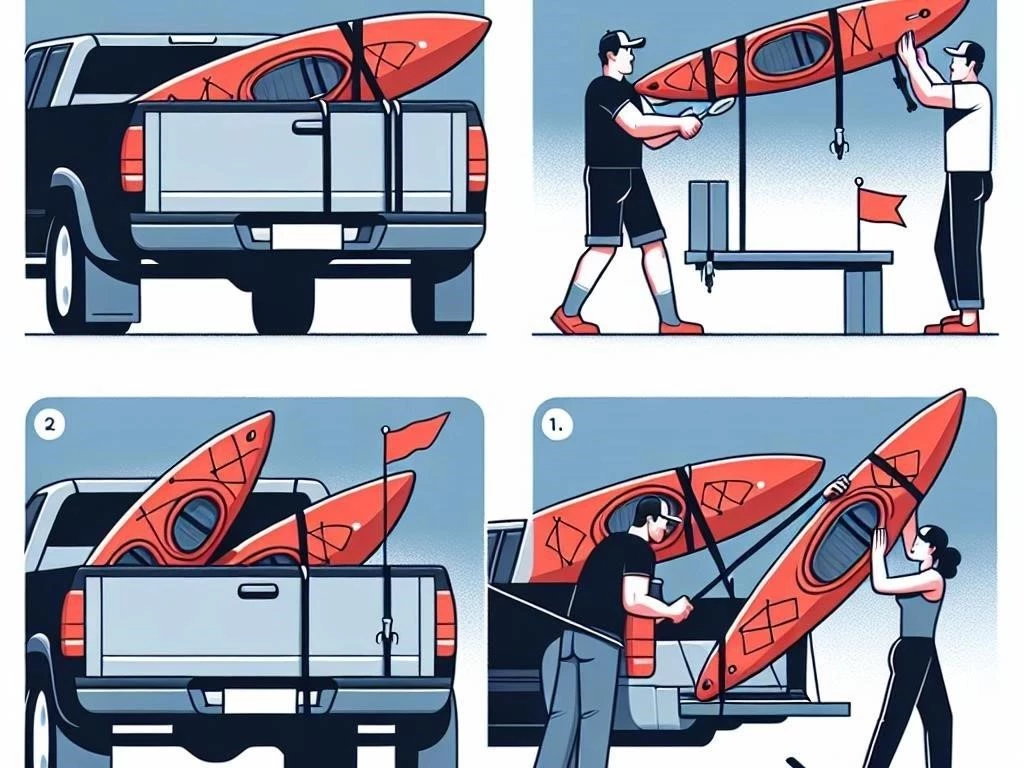
Transporting kayaks in a truck can be a convenient and efficient way to enjoy your outdoor adventures. With the right preparations and equipment‚ you can ensure safe and secure kayak transport. Understanding the importance of proper kayak storage and securing kayaks effectively can make all the difference. Utilizing truck accessories like kayak racks‚ tie-downs‚ and straps enhances vehicle stability and protects your adventure gear during transit. Whether you choose to load kayaks in the truck bed or on a roof rack‚ each method has its advantages. It’s crucial to assess your specific needs and choose the most suitable kayak carrying solutions for your vehicle. This introduction will guide you through the essential steps for effective and safe kayak transportation‚ maximizing your outdoor experiences.
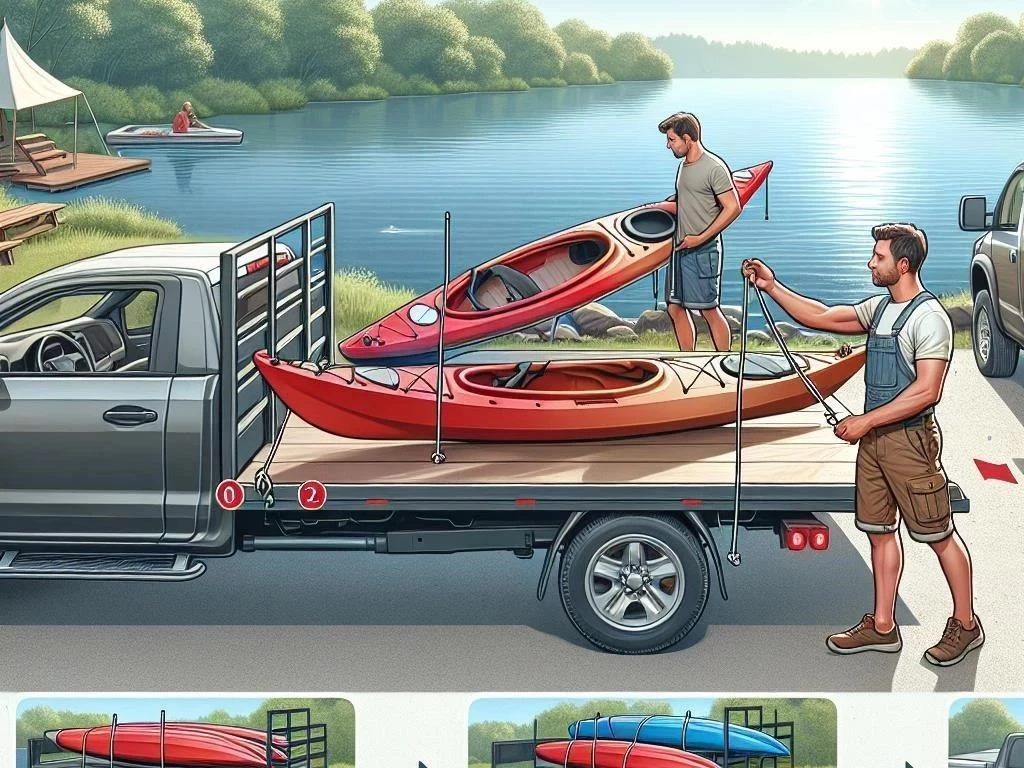
Benefits of Truck Hauling for Kayaks
Truck hauling offers numerous benefits for transporting kayaks‚ making it a popular choice among outdoor enthusiasts. First‚ the truck bed provides ample space for loading kayaks‚ ensuring they are secure and stable during transit. This method also allows for easy access‚ simplifying loading and unloading kayaks. Additionally‚ truck accessories such as kayak racks and tie-downs enhance cargo management and prevent movement while driving. Trucks generally have higher weight capacities‚ accommodating multiple kayaks or additional adventure gear with ease. Furthermore‚ using a truck reduces the risk of damaging kayaks compared to roof racks‚ where wind and height can pose challenges. Overall‚ truck hauling offers convenience‚ safety‚ and versatility‚ making it an ideal solution for transporting kayaks to your favorite water destinations.
Essential Truck Accessories for Kayak Transport
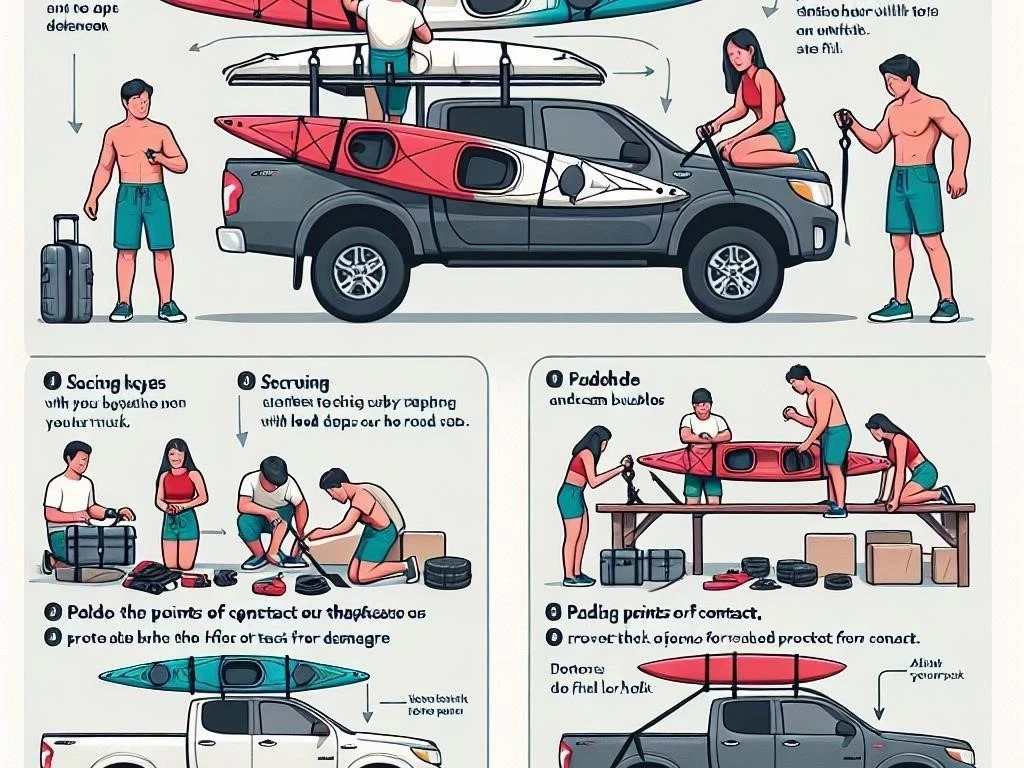
When transporting kayaks in a truck‚ having the right accessories is crucial for ensuring safety and efficiency. First‚ consider investing in a sturdy kayak rack specifically designed for trucks‚ which provides a secure platform for your kayaks. Additionally‚ kayak tie-downs are essential for securing kayaks during transit‚ preventing any unwanted movement. High-quality kayak straps offer peace of mind‚ ensuring your kayaks remain stable on bumpy roads. Another useful accessory is a truck bed extender‚ which increases the loading area and accommodates longer kayaks. Furthermore‚ protective padding or foam can prevent scratches and damage to both the kayaks and your truck bed. Lastly‚ consider a cargo net for added security‚ effectively managing the load while you’re on the road‚ ensuring a smooth and safe transport experience.
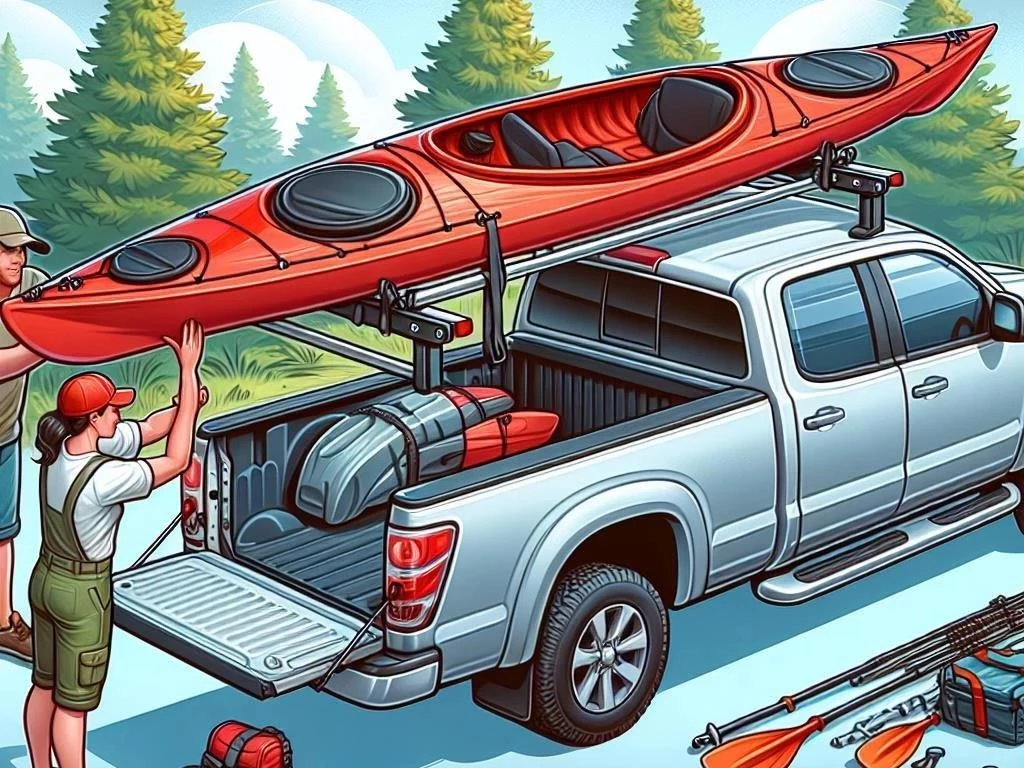
Choosing the Right Kayak Carrying Solutions

Selecting the appropriate kayak carrying solutions is vital for safe transport in a truck. Firstly‚ determine the type and size of your kayaks‚ as this influences your choice of accessories. For larger kayaks‚ a truck bed rack may be more suitable‚ providing stability and ample support. Conversely‚ smaller or portable kayaks can be easily secured with kayak straps in the truck bed. It’s also essential to assess the weight capacity of your truck to avoid overloading. If you frequently transport multiple kayaks‚ consider a kayak trailer for added convenience. Additionally‚ ensure that your chosen solutions allow for easy loading and unloading kayaks. Ultimately‚ your selection should prioritize kayak safety‚ secure transport‚ and ease of use‚ enhancing your overall adventure experience.

4.1. Truck Bed vs. Roof Rack
When considering how to transport kayaks‚ the choice between a truck bed and a roof rack is significant. Utilizing the truck bed offers a lower center of gravity‚ enhancing vehicle stability while driving. This method allows for easier loading and unloading kayaks‚ making it accessible for solo adventurers. Additionally‚ truck beds can accommodate larger kayaks and more gear without height restrictions. Conversely‚ roof racks are beneficial for those needing to maximize truck bed space or when transporting multiple kayaks. They can also provide an aesthetic advantage‚ keeping the truck bed clean and clear. However‚ loading kayaks onto a roof rack may require additional effort and safety precautions. Ultimately‚ the decision should consider personal preferences‚ kayak sizes‚ and overall transport needs for a successful adventure.
4.2. Kayak Rack Options for Trucks
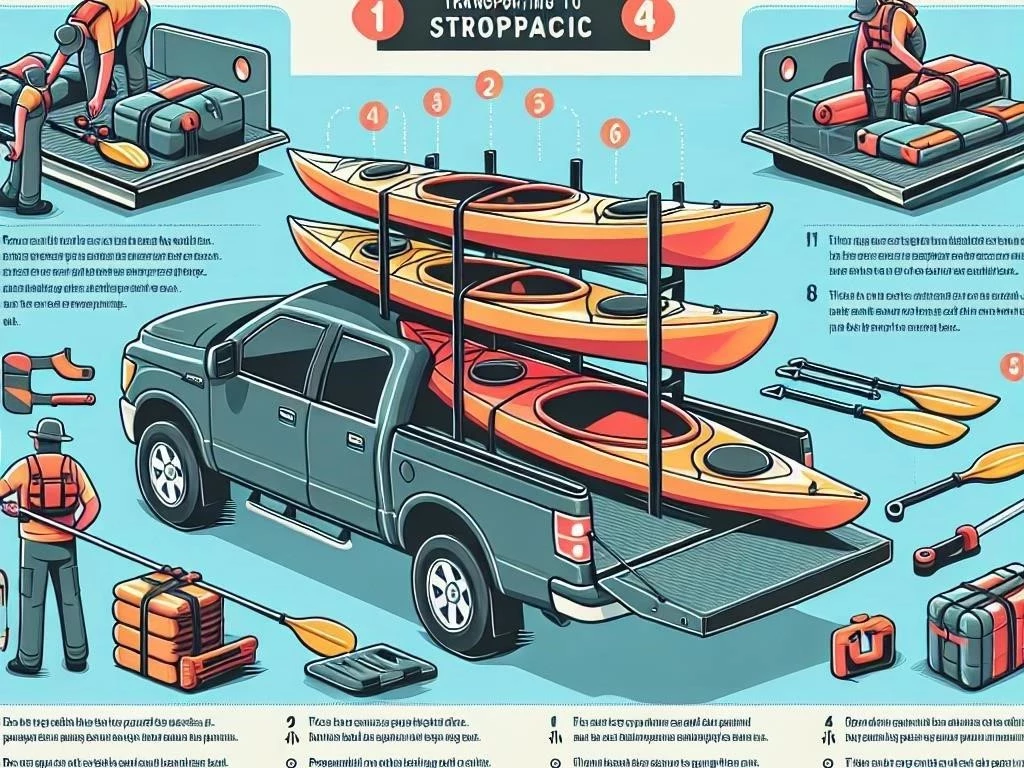
Choosing the right kayak rack for your truck is essential for safe and effective transport. There are several options available‚ each tailored to different needs and preferences. A truck bed kayak rack is a popular choice‚ as it provides stability and ease of access while ensuring the kayaks are secure during travel. For those needing extra space‚ a vertical kayak rack can hold multiple kayaks upright‚ freeing up bed space for additional gear. Another option is the hitch-mounted rack‚ which attaches to the truck’s hitch‚ allowing for easy loading and unloading. Additionally‚ universal kayak racks can be adjusted to fit various truck models. Ultimately‚ selecting the appropriate kayak rack depends on your specific needs‚ kayak sizes‚ and how often you plan to transport your kayaks.

Preparing Your Kayak for Transport
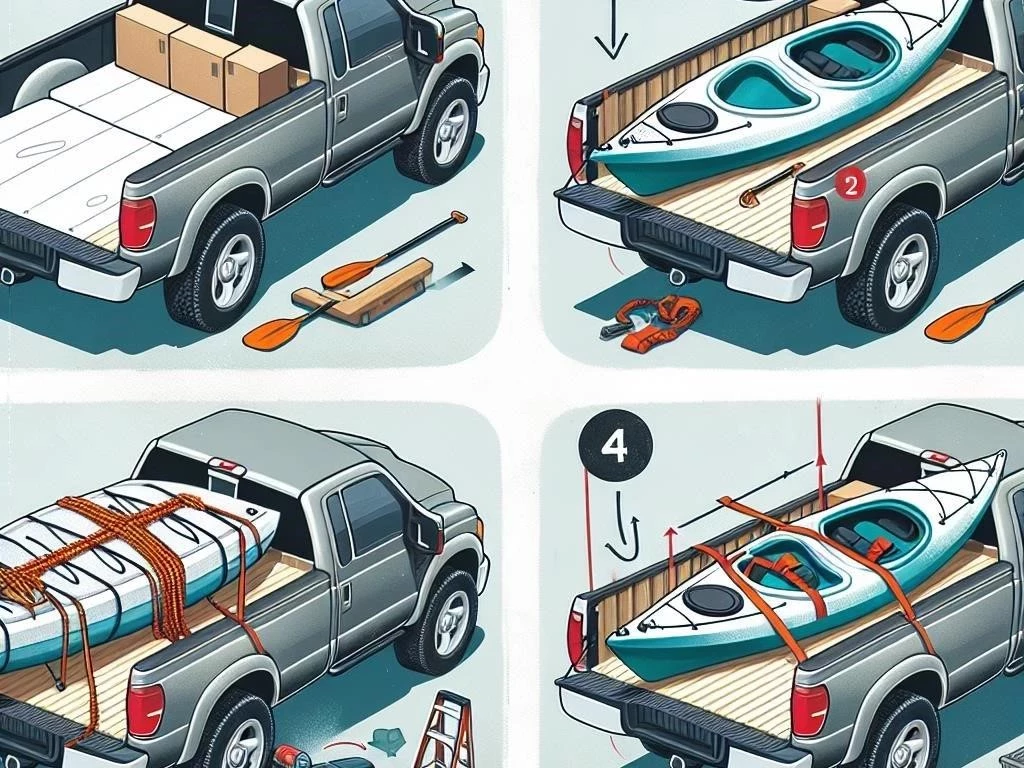
Preparing your kayak for transport is crucial to ensure its safety and longevity. Start by inspecting your kayak for any damages or weaknesses‚ such as cracks or loose fittings‚ which could worsen during transit. Clean your kayak thoroughly‚ removing dirt‚ sand‚ and debris to prevent scratches and damage during transportation. If your kayak has removable parts‚ such as paddles or seats‚ consider taking them off to reduce weight and prevent movement. Additionally‚ ensure that all hatches and compartments are securely closed to prevent water from entering. Use protective padding or blankets to safeguard against scratches or impacts during transport. Finally‚ if you’re using a truck bed‚ position the kayak correctly‚ ensuring it is balanced and ready for secure loading‚ which contributes to overall kayak safety.

5.1. Inspecting Your Kayak
Inspecting your kayak before transport is essential to ensure its condition and safety. Begin by examining the hull for any visible cracks‚ dents‚ or scratches that could compromise its integrity. Pay close attention to the areas around the keel and edges‚ as these are often the most vulnerable. Next‚ check seams and fittings for any signs of wear or damage‚ which could lead to leaks. It’s also crucial to inspect the rudder and skeg‚ if applicable‚ ensuring they are functioning properly. Additionally‚ evaluate the kayak’s storage compartments‚ ensuring they close securely. Taking these steps not only helps identify potential issues before transport but also minimizes the risk of damage during loading and unloading. A thorough inspection ensures your kayak is ready for safe and enjoyable adventures ahead.
5.2. Cleaning and Storing Your Kayak

Properly cleaning and storing your kayak is essential for maintaining its condition and longevity. After each use‚ rinse your kayak with fresh water to remove salt‚ sand‚ and debris that could cause damage over time. Use a mild soap and a soft cloth to clean any stubborn stains‚ paying particular attention to the hull and cockpit area. Once cleaned‚ dry the kayak thoroughly to prevent mold and mildew growth. When storing your kayak‚ choose a cool‚ dry location away from direct sunlight‚ as UV rays can degrade materials. If possible‚ store the kayak on a rack or suspended to avoid pressure points. Covering it with a breathable tarp can protect against dust and moisture‚ ensuring your kayak remains in excellent condition for future adventures.

Loading Kayaks into the Truck
Loading kayaks into a truck requires careful technique to ensure safety and prevent damage. Start by positioning the truck near a flat surface to facilitate easy loading. If you’re alone‚ consider using a kayak cart to transport the kayak closer to the truck. Always lift the kayak from the center to maintain balance‚ using your legs for support to avoid strain. When you’re ready to load‚ tilt the kayak slightly and slide it into the truck bed‚ ensuring it doesn’t scrape against the sides. If using a truck bed rack‚ align the kayak carefully before securing it. Once loaded‚ double-check that the kayak is stable and won’t shift during transit. Proper loading techniques enhance cargo management and ensure a safe journey to your destination.
6.1. Techniques for Safe Loading
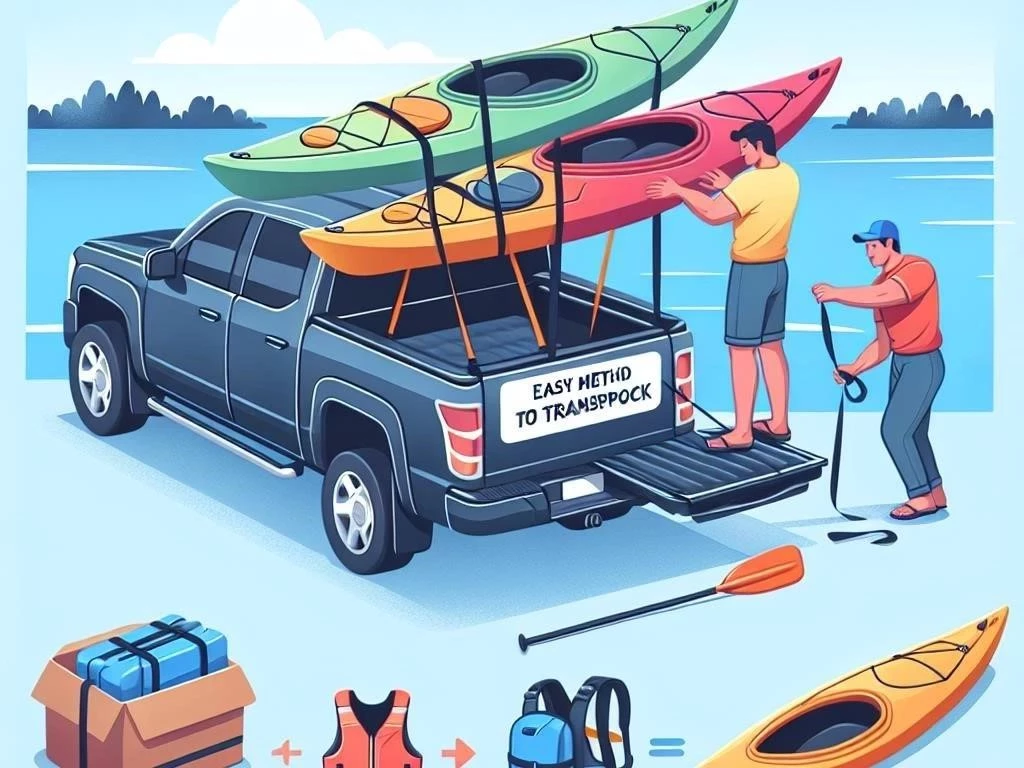
Employing safe loading techniques for your kayak is vital to prevent injury and damage; Begin by assessing the kayak’s weight and size‚ ensuring you can handle it effectively. If possible‚ enlist a partner to assist with lifting‚ promoting teamwork and safety. When lifting‚ bend your knees and maintain a strong grip on the kayak’s center to keep it balanced. If using a truck bed‚ position the kayak at an angle‚ gradually sliding it into place while ensuring it doesn’t hit the truck’s edges. Consider using a loading ramp for added convenience and reduced strain. Once loaded‚ adjust the kayak’s position to ensure it’s centered and secure. Finally‚ double-check that all tie-downs are fastened properly‚ as this will keep the kayak stable during transport.
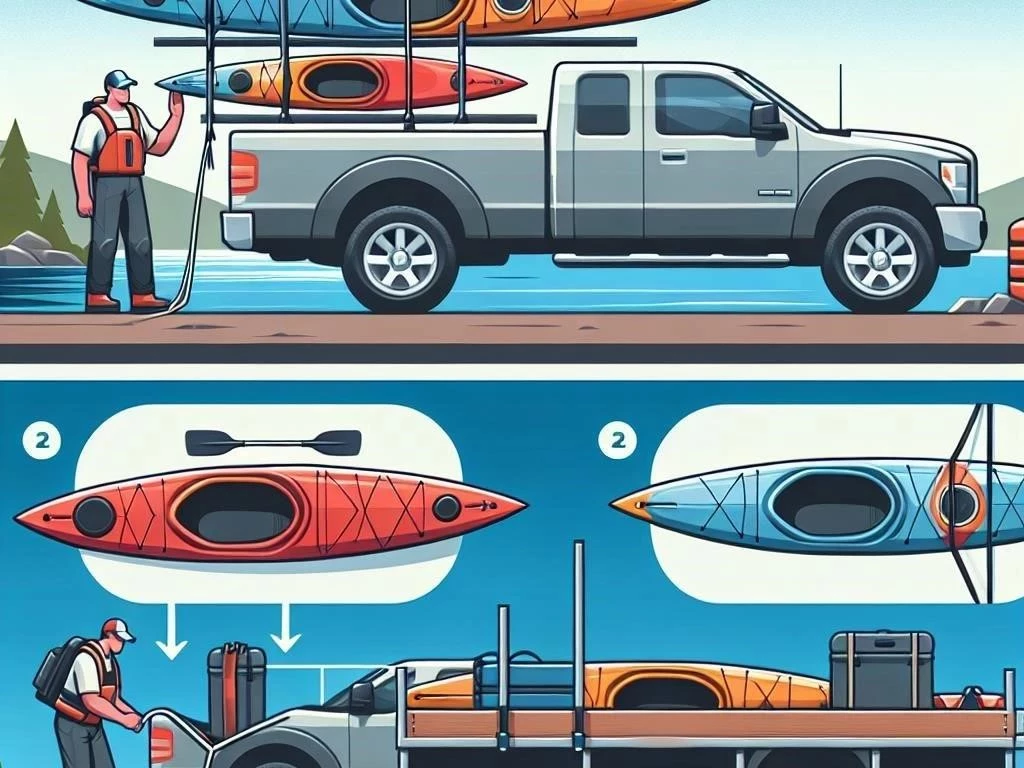
6;2. Using Kayak Tie-Downs Effectively
Utilizing kayak tie-downs effectively is essential for ensuring your kayak remains secure during transport. Begin by selecting high-quality tie-down straps that are specifically designed for securing kayaks. When attaching the tie-downs‚ position the kayak centrally in the truck bed to promote balance. Loop the straps over the kayak‚ ensuring they are snug but not overly tight‚ as excessive pressure can damage the kayak’s hull. Use anchor points in the truck bed‚ such as D-rings or cleats‚ to secure the straps effectively. It’s crucial to check that the tie-downs are not twisted and are positioned away from any sharp edges. Finally‚ after securing the kayak‚ shake it gently to ensure it is stable and won’t shift during transit‚ enhancing overall kayak safety on the road.
Securing Kayaks for Transportation
Securing kayaks for transportation is a critical step in ensuring their safety during transit. After loading your kayak into the truck‚ begin by using high-quality tie-down straps to fasten it securely. Ensure that the straps are evenly distributed across the kayak’s hull to provide balanced support. It’s advisable to use at least two tie-downs for each kayak‚ attaching them to both ends. Check that the straps are tight but not overly constrictive‚ as this could damage the kayak. Additionally‚ consider using foam padding or protective covers to reduce friction and prevent scratches. Regularly inspect the straps during travel to ensure they remain tight. Properly securing kayaks enhances vehicle stability‚ reduces the risk of damage‚ and promotes a worry-free transport experience on your adventures.
7.1. Choosing the Right Kayak Straps
Selecting the right kayak straps is essential for safe and effective transportation. Start by choosing straps made from durable‚ weather-resistant materials‚ ensuring they can withstand outdoor conditions. Look for straps with a minimum breaking strength rating suitable for your kayak’s weight‚ providing peace of mind during transport. Cam buckle straps are popular for their ease of use; they allow for quick adjustments while securing the kayak. Alternatively‚ consider ratchet straps‚ which provide a tighter grip but require careful handling to avoid excessive compression. Additionally‚ padded straps can help prevent damage to your kayak’s surface. Always opt for straps with strong hooks or loops‚ compatible with your truck’s anchor points‚ ensuring a secure and stable hold during your outdoor adventures.
7.2. Ensuring Vehicle Stability During Transit
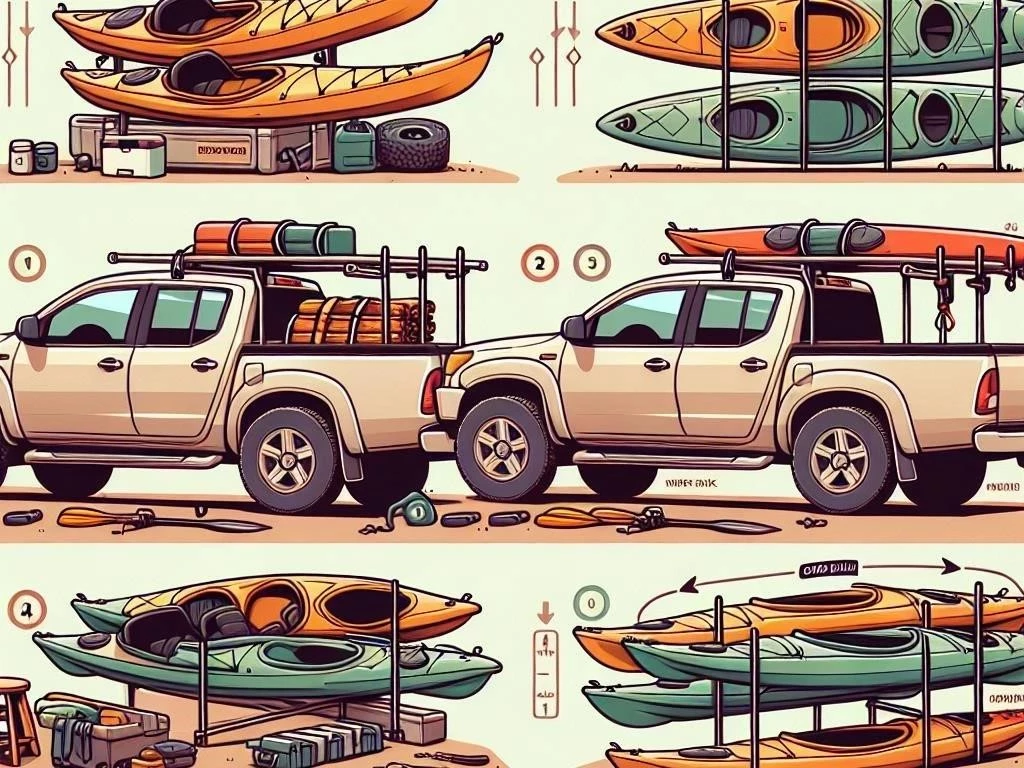
Ensuring vehicle stability during transit is crucial when transporting kayaks in a truck. First‚ make sure the kayak is loaded evenly in the truck bed‚ centering its weight to maintain balance. This helps prevent swaying or shifting while driving. Utilize quality tie-downs and straps to secure the kayak firmly‚ as loose or inadequate securing can affect stability. Additionally‚ reduce speed when cornering or navigating uneven terrain‚ as sudden movements can destabilize the vehicle. If transporting multiple kayaks‚ ensure they are spaced adequately to prevent interference. Regularly check the straps during long trips to confirm that they remain tight and secure. Finally‚ consider using a truck with a lower center of gravity‚ which enhances overall stability and contributes to a safe transport experience.
Unloading Kayaks from the Truck
Unloading kayaks from a truck requires careful attention to prevent damage and ensure safety. Begin by ensuring that the area around the truck is clear of obstacles to facilitate a smooth unloading process. Before removing any tie-downs‚ check that the kayak is stable and secure. If you have assistance‚ coordinate with your partner to lift the kayak evenly‚ maintaining its balance throughout the process. When ready to unload‚ carefully slide the kayak out of the truck bed‚ keeping it tilted slightly to avoid scraping against the sides. If using a kayak cart‚ position it nearby to facilitate easy transfer. Once on the ground‚ inspect the kayak for any damage incurred during transport. Proper unloading techniques help maintain the kayak’s condition and prepare it for immediate use.

8.1. Best Practices for Safe Unloading
Implementing best practices for safe unloading of kayaks is essential to prevent accidents and damage; Start by ensuring the truck is parked on level ground‚ which provides stability during the unloading process. Before removing any straps‚ double-check that the kayak is secure and won’t shift unexpectedly. If possible‚ enlist a partner to assist with unloading‚ as teamwork improves safety and efficiency; When lifting the kayak‚ bend your knees and maintain a firm grip from the center to keep it balanced. Carefully tilt the kayak as you slide it out of the truck bed‚ ensuring it doesn’t scrape against the edges. Once on the ground‚ check for any damage before proceeding. Adhering to these practices ensures a smooth transition from truck to water‚ enhancing your adventure experience.
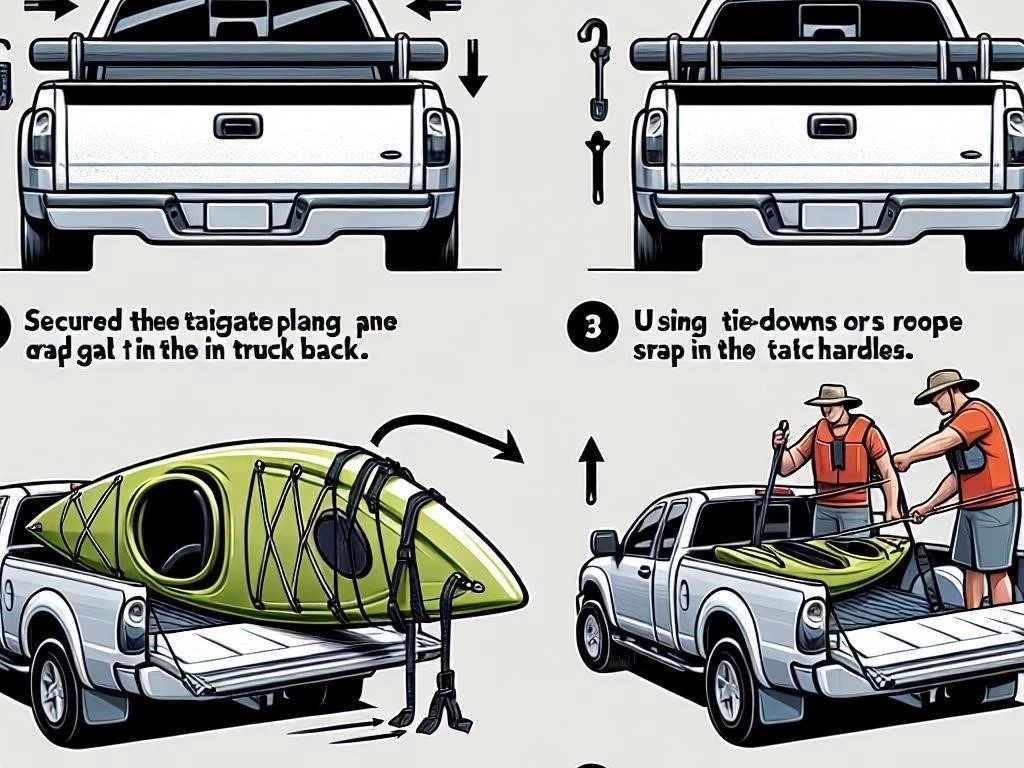
8.2. Handling Your Kayak After Transport
Handling your kayak after transport is crucial for maintaining its condition and preparing for use. Once unloaded‚ carefully inspect the kayak for any signs of damage or wear sustained during transit. Check the hull‚ seams‚ and fittings to ensure everything is intact. If applicable‚ remove any protective coverings or padding used during transport to avoid unnecessary wear. Cleaning your kayak is essential; rinse off any debris‚ dirt‚ or saltwater to prevent long-term damage. After cleaning‚ dry the kayak thoroughly to avoid mold or mildew growth. If you plan to store the kayak‚ ensure it is positioned correctly on a rack or suspended to avoid pressure points. Proper handling after transport ensures your kayak remains in optimal condition‚ ready for your next adventure.
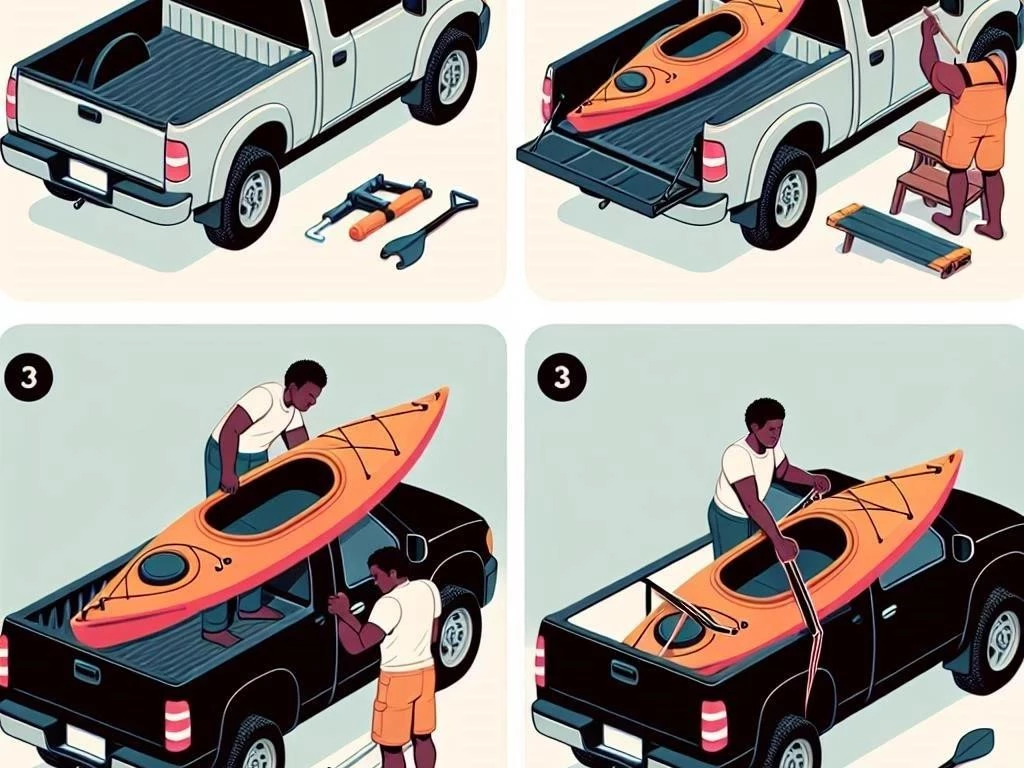
Kayak Safety Tips During Transport
Ensuring kayak safety during transport is vital for protecting your equipment and ensuring a smooth journey. Start by selecting a suitable vehicle that can accommodate the kayak’s size and weight. Always use high-quality tie-downs and straps to secure the kayak firmly‚ preventing movement while driving. Before hitting the road‚ double-check that all straps are tight and that the kayak is stable. Avoid exceeding speed limits‚ especially on windy or bumpy roads‚ as excessive speed can destabilize both the vehicle and the kayak. Be aware of clearance when passing under bridges or overhanging structures to prevent damage. Regularly check the kayak during long trips‚ ensuring it remains secure. Following these safety tips will help ensure a safe and enjoyable transport experience for your kayaking adventures.
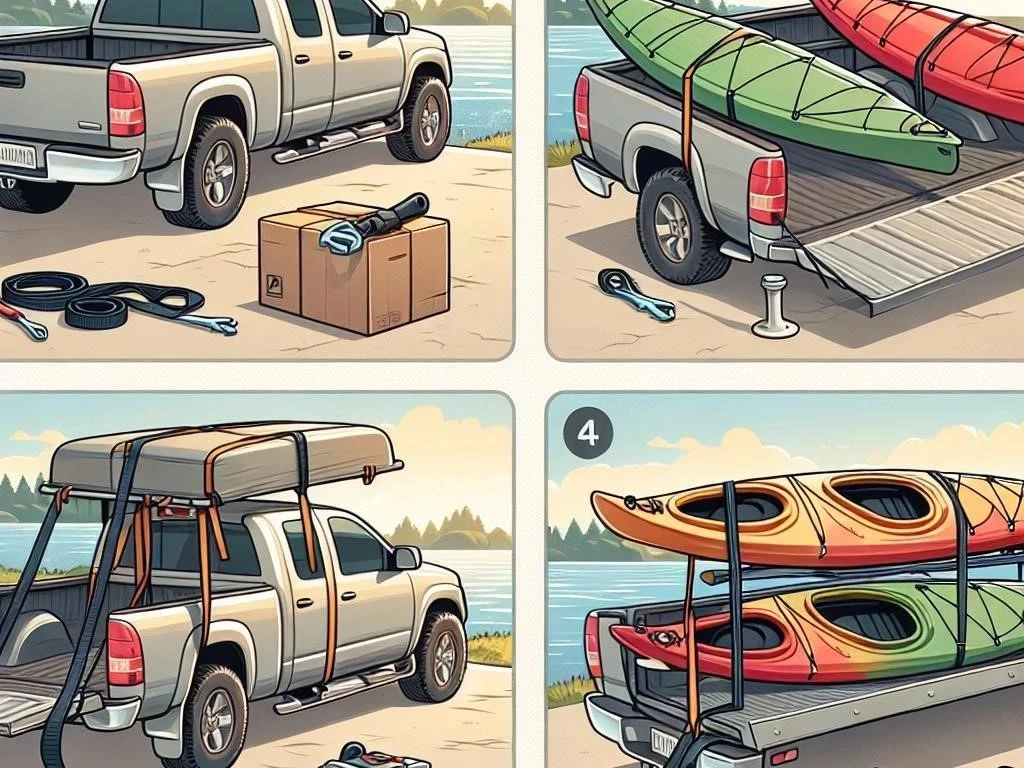
Cargo Management Solutions for Outdoor Transportation

Effective cargo management solutions are essential for outdoor transportation‚ especially when hauling kayaks in a truck. Start by utilizing a dedicated kayak rack designed for your truck‚ which provides additional stability and organization. Consider using cargo nets or straps to secure other adventure gear‚ preventing shifting during transit. Installing bed dividers can help separate kayaks from other equipment‚ ensuring everything stays organized. Additionally‚ using waterproof cargo bags will protect your gear from the elements‚ while also providing extra storage space. For larger trips‚ a kayak trailer can complement your truck‚ allowing you to transport multiple kayaks alongside other outdoor essentials. Implementing these cargo management solutions will enhance your transport experience‚ ensuring that all your outdoor equipment is secure‚ organized‚ and ready for use.
Using a Kayak Trailer for Additional Convenience
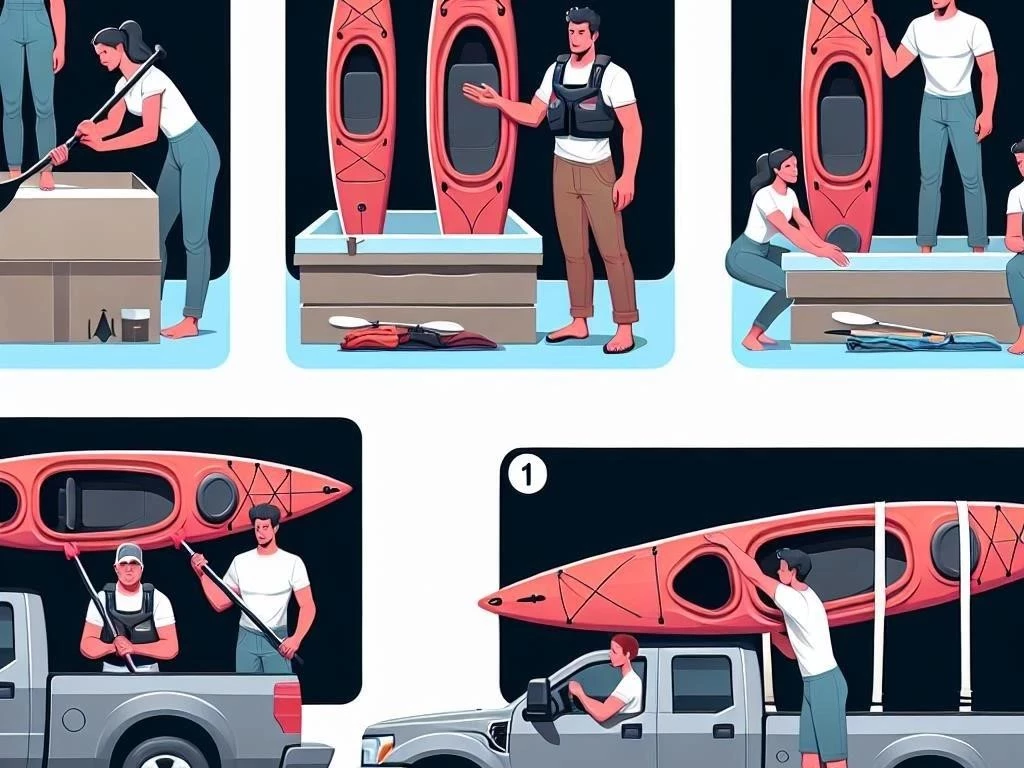
Using a kayak trailer can significantly enhance convenience when transporting kayaks‚ especially for larger groups or multiple kayaks. A dedicated kayak trailer provides a stable platform for secure transport‚ minimizing the risk of damage during transit. When selecting a trailer‚ ensure it is compatible with your vehicle and designed to accommodate the size and weight of your kayaks. Most trailers come equipped with adjustable supports and tie-down points‚ making it easy to secure kayaks effectively. Additionally‚ a kayak trailer allows for easy loading and unloading‚ reducing the physical strain associated with lifting kayaks into a truck bed. Furthermore‚ trailers typically offer extra storage space for other outdoor gear‚ enhancing your overall outdoor experience. Using a kayak trailer streamlines transportation‚ ensuring a hassle-free journey to your next adventure.
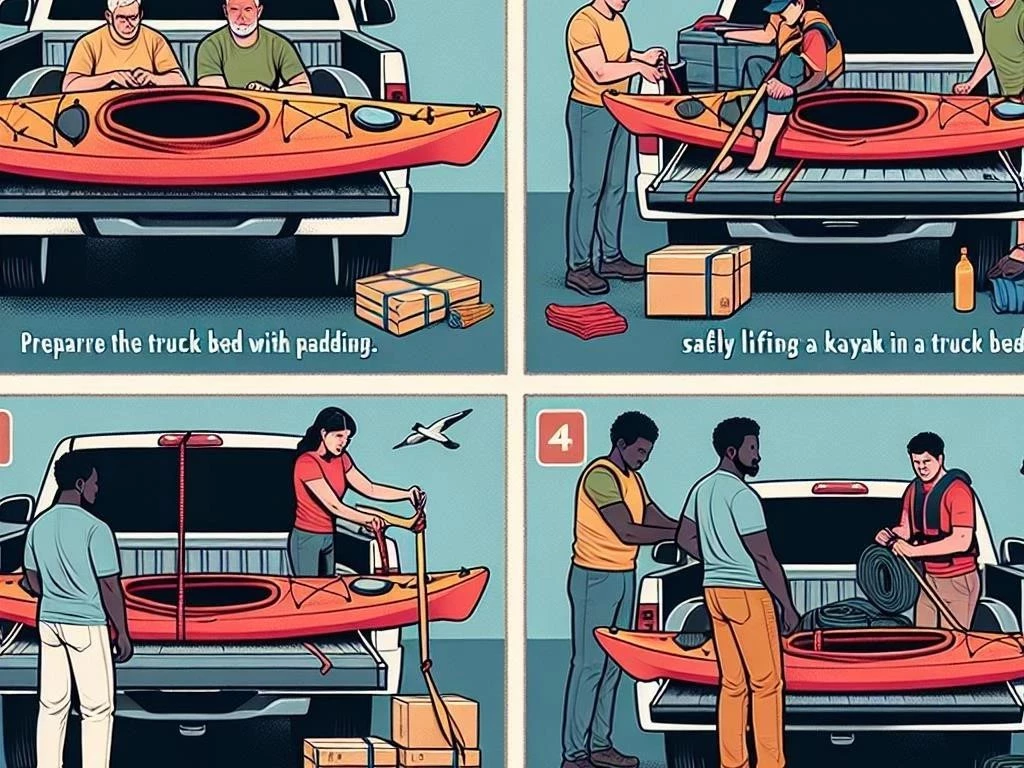
Proper kayak transport is essential for ensuring a safe and enjoyable adventure on the water. By following best practices for loading‚ securing‚ and unloading kayaks in your truck‚ you can minimize the risk of damage and enhance your overall experience. Utilizing appropriate truck accessories‚ such as kayak racks and tie-downs‚ ensures that your kayaks are stable and secure during transit. Additionally‚ being mindful of safety tips‚ cargo management solutions‚ and considering a kayak trailer can significantly improve convenience. Ultimately‚ investing time in learning effective transport techniques allows you to focus on what truly matters—enjoying the beauty of nature and the thrill of kayaking. With the right preparation and equipment‚ every adventure can be memorable and hassle-free‚ paving the way for countless outdoor experiences.
